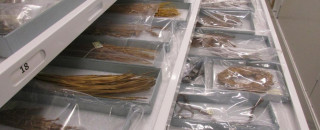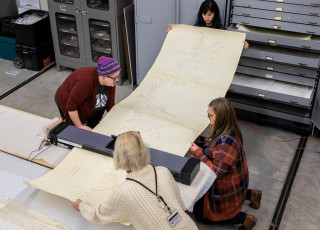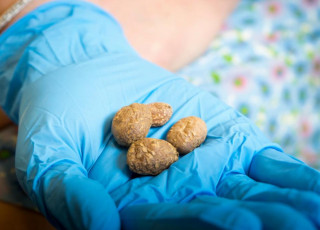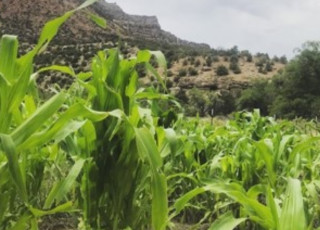New Archaeology Guidelines Set to Save Old Collections
Archaeological artifacts in the Natural History Museum of Utah collections, properly stored and cared for. Credit: Michelle Knoll ©NHMU
By Riley Black
The heart of any natural history museum is its collections. In the case of the Natural History Museum of Utah, that’s millions of individual specimens held behind the scenes. Each is carefully identified, labeled, and cared for by expert curators who keep the wheels of research turning.
But sometimes a collection made by a researcher doesn’t make it to a museum. In the case of archaeology, that can mean artifacts, soil samples, field notes, and other essential information left in a sort of scientific purgatory; collected from a field site, but a few steps short of making it to a museum where those items can be cared for long-term. To help smooth the process for professionals, the NHMU’s assistant curator of archaeology Michelle Knoll and Bruce Huckell, curator at the Maxwell Musem, developed guidelines to instruct archaeologists on how to prepare these collections for curation with the appropriate museums.
Curation is an important part of science. “Archaeological curation is the professional long-term management, care, and interpretation of artifacts, ecofacts, and associated records,” the new guide states. But, for various reasons, sometimes those materials get caught up in the middle.
Some archaeologists inherit from their predecessors artifacts that haven’t been properly organized or looked after . Other times, a collection made decades ago still remains with the original collector, but without any funding to take care of it. Being left with materials that should be properly curated, but haven’t been yet, can sometimes raise the question of where to even start.
“Preparing collections for curation is expensive, it’s time-consuming, and you have to pay curation fees to museums,” Knoll says. Sometimes all the necessary work to take care of a legacy collection seems so intimidating that those collections don’t get the care they need. This can result in damage over time.
“I have examples of colored slides from the 60s that document a site, and because the slides were left in temperatures that were above 50 degrees, when they should have been kept at freezing, and now they’re all red. You can hardly see the image anymore,” Knoll says. “They got ruined because they were kept in an office that was too hot. People don’t realize that things do deteriorate.”
To address these problems, Knoll and Huckell worked with other members of the Society for American Archaeology’s Committee on Museums, Collections, and Curation to set out recommendations for archaeologists to prepare collections for curation.
The guide offers instruction to rescue such collections and prevent the same problems from happening in the future. “We wrote it from the perspective of a museum, when someone comes to us and says ‘Well I’ve got this collection. Here,’” Knoll says. “We’re going to say hold on a minute, red flag, do you have your permits, do you have your paperwork, do you have land owner’s permission, do you have everything packaged properly, is it in archival packaging?” All of these standards are critical for archaeology and form the context that makes any particular piece useful to researchers.
How to establish ownership of materials, organize them, house them in proper materials, and even find funding to get all the work done is all part of the instruction. It gives researchers responsible for legacy collections a place to start, and acts as a primer on how new collections can be properly cared for. “Our hope is that more archaeologists who have these collections will be more cognizant,” Knoll says, of rescuing old collections and forming new ones with care.
Riley Black is the author of Skeleton Keys, My Beloved Brontosaurus, Prehistoric Predators, and a science writer for the Natural History Museum of Utah, a part of the University of Utah in Salt Lake City. Our mission is to illuminate the natural world and the place of humans within it. In addition to housing outstanding exhibits for the public, NHMU is a research museum. Learn more.



